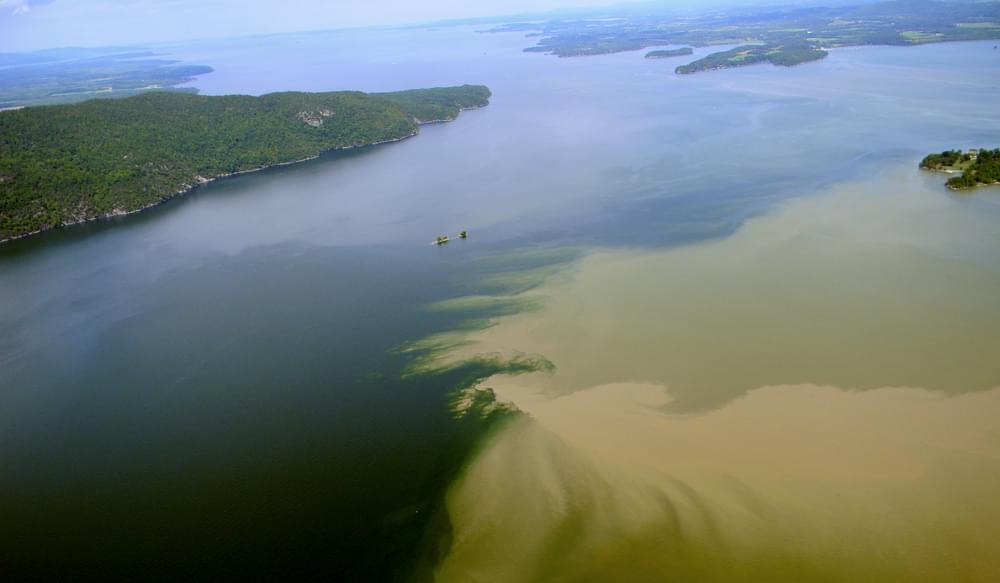Climate Change Impacts

Water Quality
Increased Storm Events and Flooding
The less frequent but more intense summer rain events have led to more dangerous flash floods. Though flooding is a normal phenomenon in our ecosystem, more damaging floods have been recorded in the past half-century than ever before. Floods put shoreline property and infrastructure at risk by eroding streambanks, and wash nutrients and toxic contaminants downstream to the Lake, promoting the growth of harmful algae blooms, reducing recreational opportunities, and compromising our drinking water.
Increases in maximum surface water temperatures lengthen the season when water layers are different temperatures at different depths. This long-term thermal stratification, combined with enhanced nutrient content, may intensify potentially toxic algae blooms. Toxic or not, algae blooms degrade water quality and reduce dissolved oxygen, depriving fish and other aquatic life of oxygen needed for respiration. In addition to these ecological impacts of algae blooms, toxic algae blooms threaten human and animal health. These changes to the chemical and physical environment have other impacts to ecosystems.
More on Climate Change Impacts
U.S. National Climate Assessment 2014 Report: Climate Change Impacts in the United States
To learn about actions taken to address climate change, please visit the “Healthy Ecosystem Goal”chapter in the Lake Champlain Management Plan Opportunities for Action.